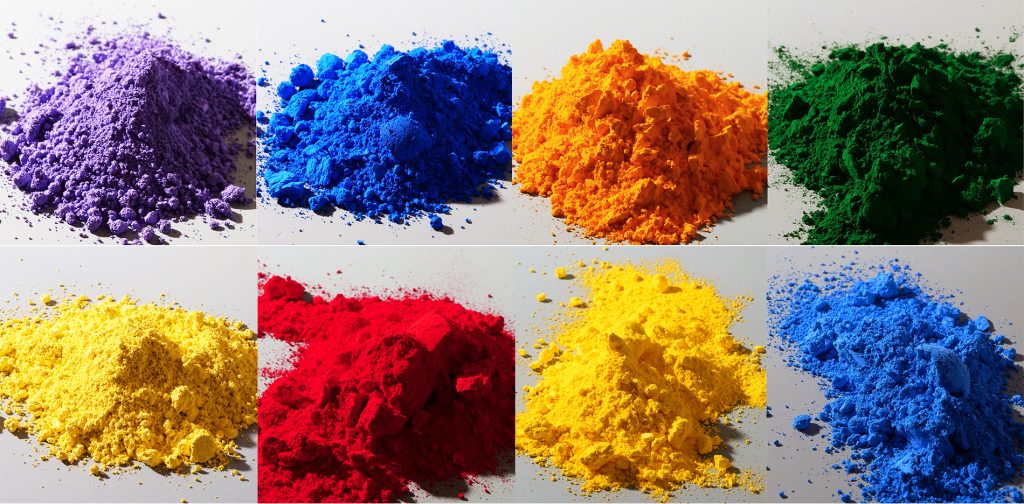
Being able to make paint from pigment powder is empowering and opens up possibilities. While the steps are straightforward, one might have to experiment for a while to get to a formulation that works for a specific application. In this article we provide a general recipe for making acrylic paints from scratch.
Please keep in mind that, unless you have the proper environment, equipment and training, we do not recommend working with potentially toxic pigments, such as those based on lead, cadmium or mercury. Even when using less toxic pigments, we strongly recommend use of a properly fitted, NIOSH approved half-mask respirator equipped with P100 filtration or the equivalent
While it is possible to simply add some acrylic medium to pigment powders on the palette, and mix with a palette knife, the resulting paint might contain small lumps.
In brief, making acrylic paints from scratch requires three simple steps:
1: Wetting out dry pigments
2: Mulling pigment paste
3: Mixing with acrylic binder
Step 1: Wet out pigments with water and Wetting Aid
Soaking pigment powders in a small amount of water first, softens up pigment agglomerates or pigment clusters, and makes it easier to create a smooth paint. Some pigments, particularly synthetic organics, like the Phthalo Blues or Benzimidazolone Yellows, repel water. For these pigments it helps to add some Wetting Aid to the water. This breaks the surface tension of the water and makes it easier to mix with water-repellent pigments (Image 1). Refer to the Wetting Aid tech sheet for recommended mixing ratios of water to Wetting Aid. Water-repellent pigments might require longer stirring, which incorporates more air bubbles in the paste. Letting pigment pastes sit overnight helps to let air bubbles escape.

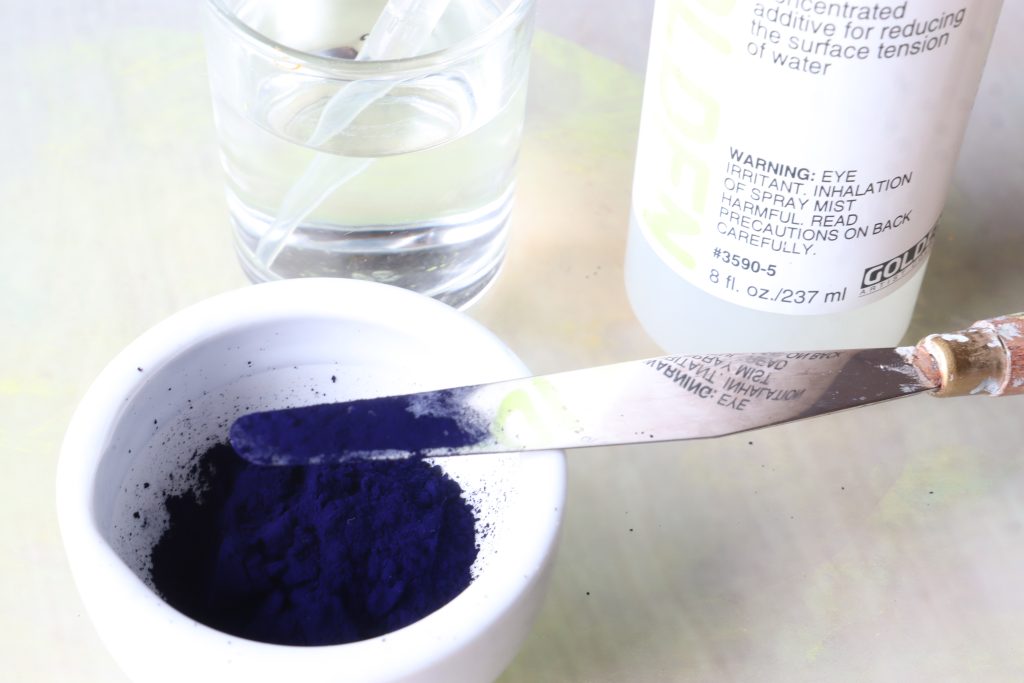
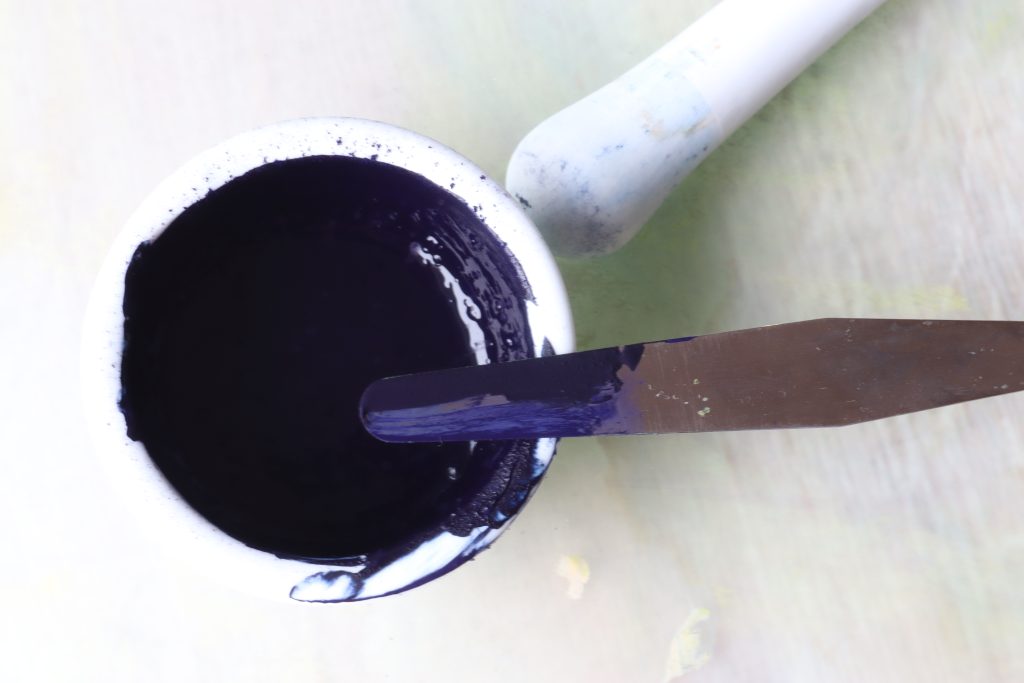
Step 2: Mulling pigment paste
Creating a pigment paste first allows for the pigments to be mulled thoroughly without running the risk of acrylic binder drying up and creating clumps of paint. Pigments, which mix readily with water can be made into a pigment paste directly on a glass plate and mulled immediately. Generally, inorganic pigments, whether natural or synthetic, mix readily with water.
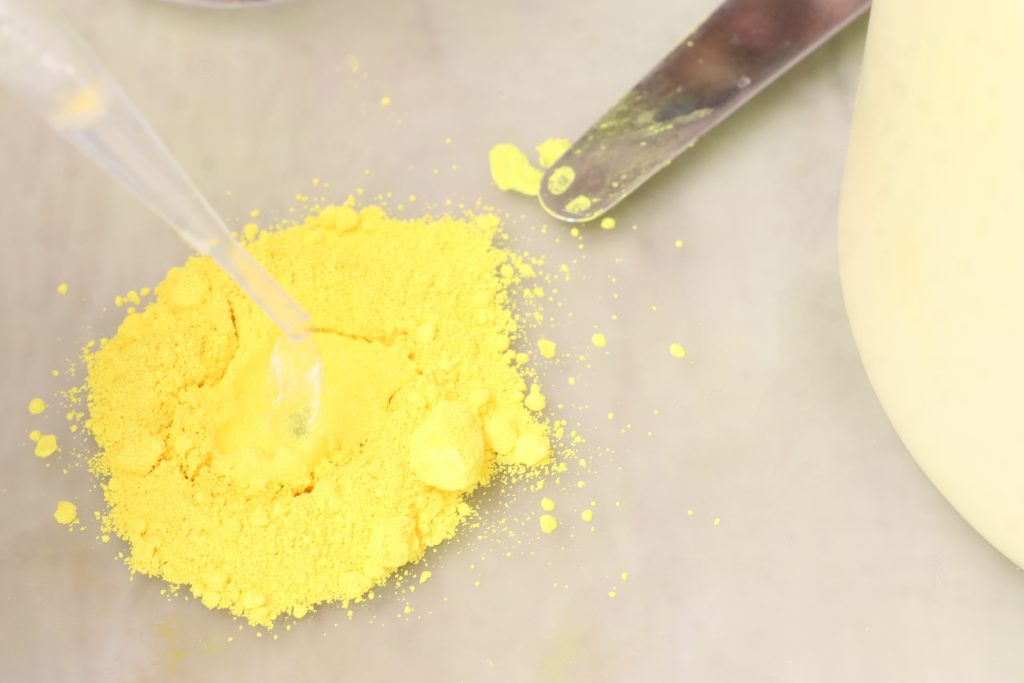
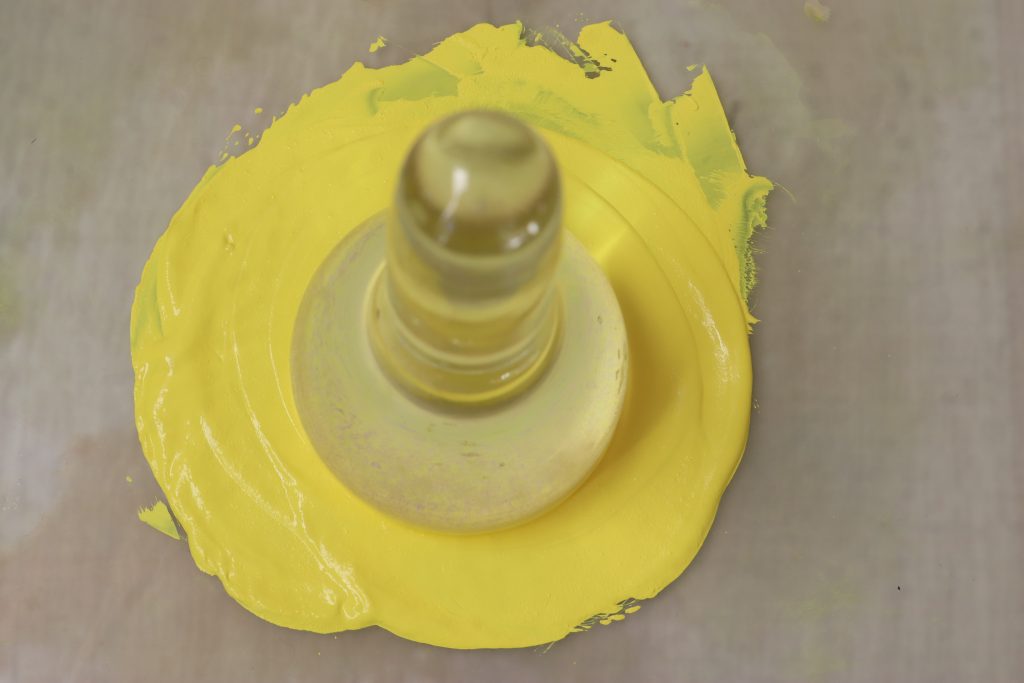
Step 3: Add GAC 100 or another acrylic binder
After the pigment is mulled to a smooth paste, an acrylic medium may be added. GAC 100 is our recommended medium for making a smooth acrylic paint from dry pigments. GAC 100 is good at wetting out and binding pigments. Once GAC 100 and the pigment paste have been mixed into a well-bound paint, it’s still possible to further adjust the paint with the addition of acrylic gels, pastes or mediums, to change viscosity, sheen, translucency, or dry time. For example, in Image 7 we mixed our handmade Bismuth Vanadate paint with OPEN Medium to extend the dry time of the paint, and with Heavy Gel Gloss to thicken the the viscosity of the paint. You may want to imbue your paints with other properties, like improved leveling, or film hardness. All of this is possible with the right medium. Here are overview videos of our acrylic mediums, gels and pastes, for inspiration.
We recommend applying the handmade paints onto a sacrificial test surface, letting them dry, and then assessing if the paints are well-bound or possibly under-bound, cracking or flaking (see Image 8). Testing on paper or unstretched canvas allows you to flex the paint-outs a little, and thus test the flexibility of your handmade paint.
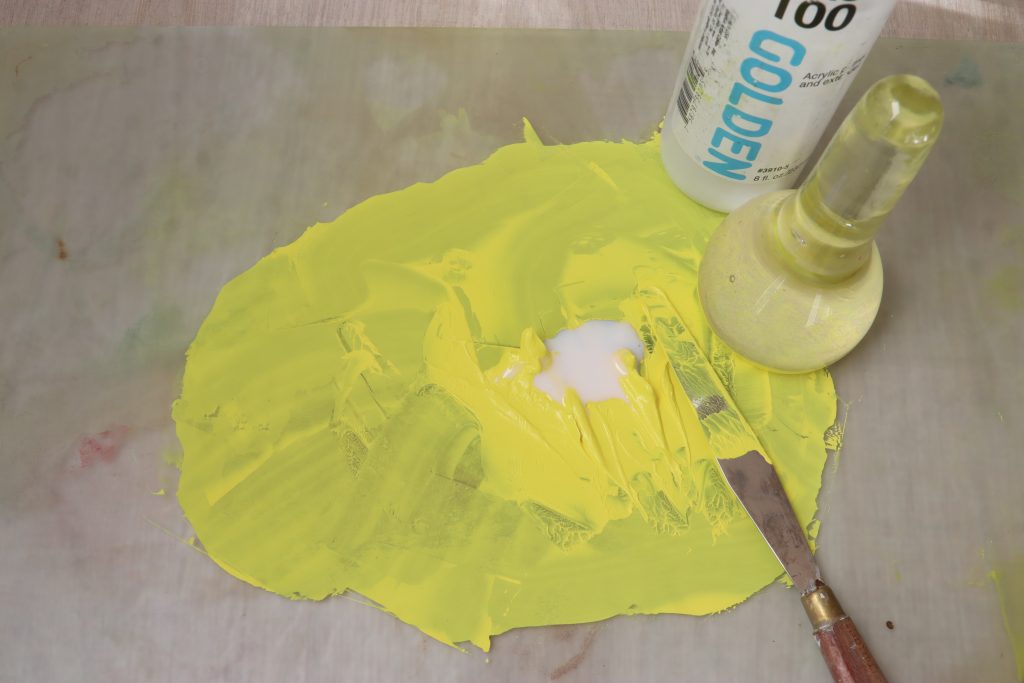
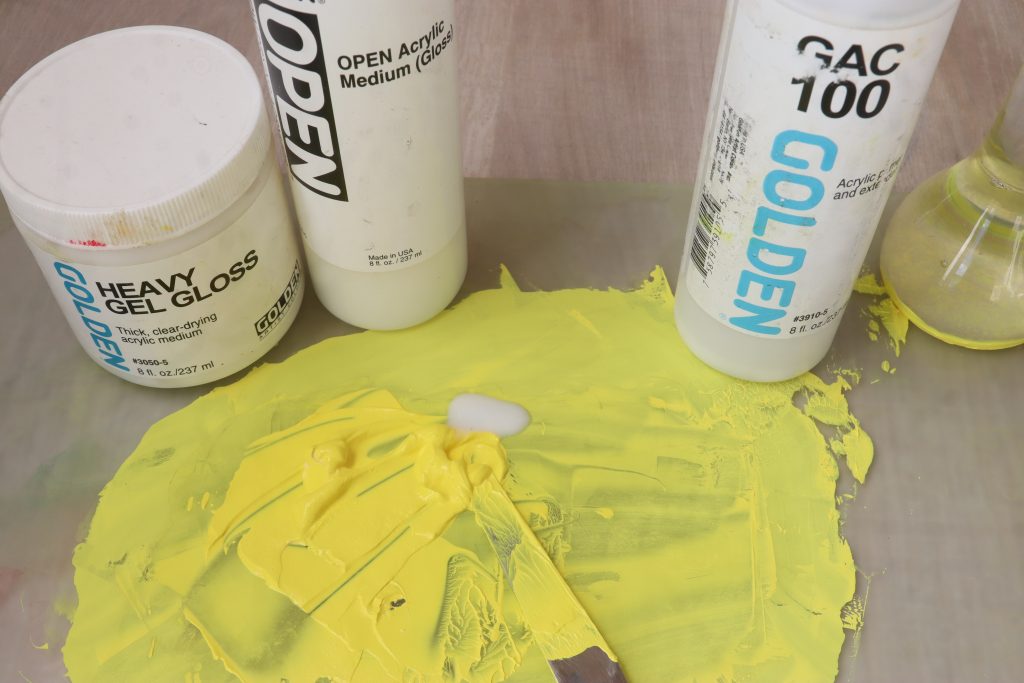
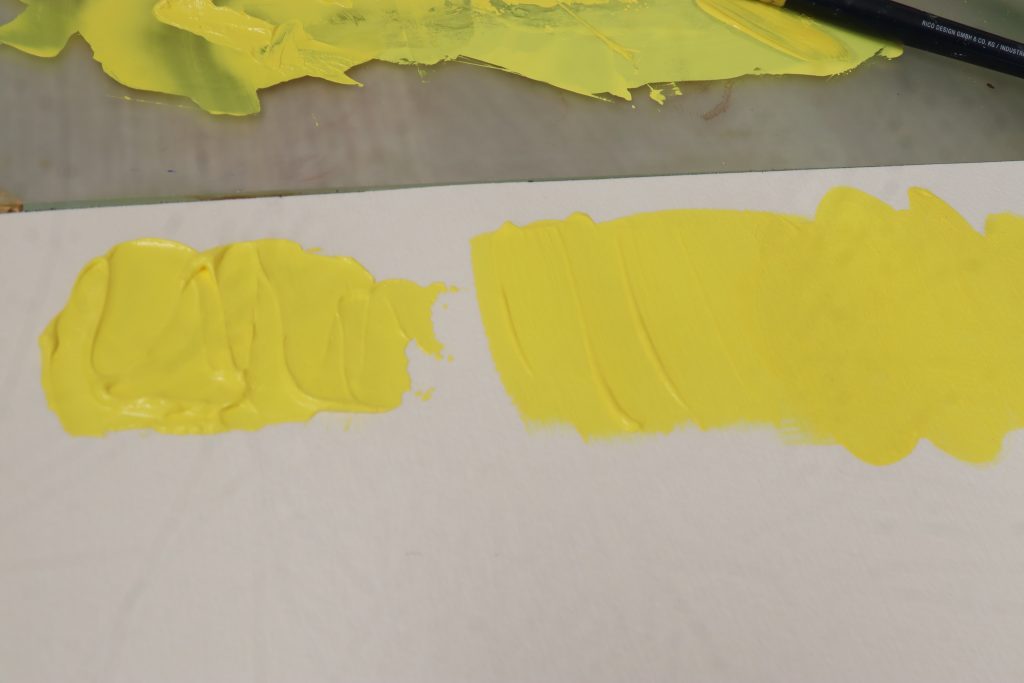
Handmade paints are more likely to separate, whereby the acrylic binder separates from the pigment (Image 9) or have other stability issues such as thickening with long term storage. This isn’t an issue if the self-made paint is used right away. However, if you intend to store handmade paint, airtight open-mouthed containers allow for easy stirring before use.
It’s only with large special effect pigments, like mica pigments, that direct mixing with acrylic medium without mulling would be recommended (Image 10). Using a mortar or muller with mica pigments can crush the mica flakes and reduce their luster and color effect.
We hope you’ll enjoy making your own homemade acrylic paints. Please feel free to share your experiences with us in the comments.
Further Links:
- More in-depth article on diy acrylic paint making: Just Make Paint
- Instruction on Wetting Aid
- Article on pigment concentration: Pigment Volume Concentration and its Role in Color
- Article on adhesion testing: Will It Stick? Simple Adhesion Testing In Your Studio
About Mirjam Auf der Mauer
View all posts by Mirjam Auf der Mauer -->Subscribe
Subscribe to the newsletter today!

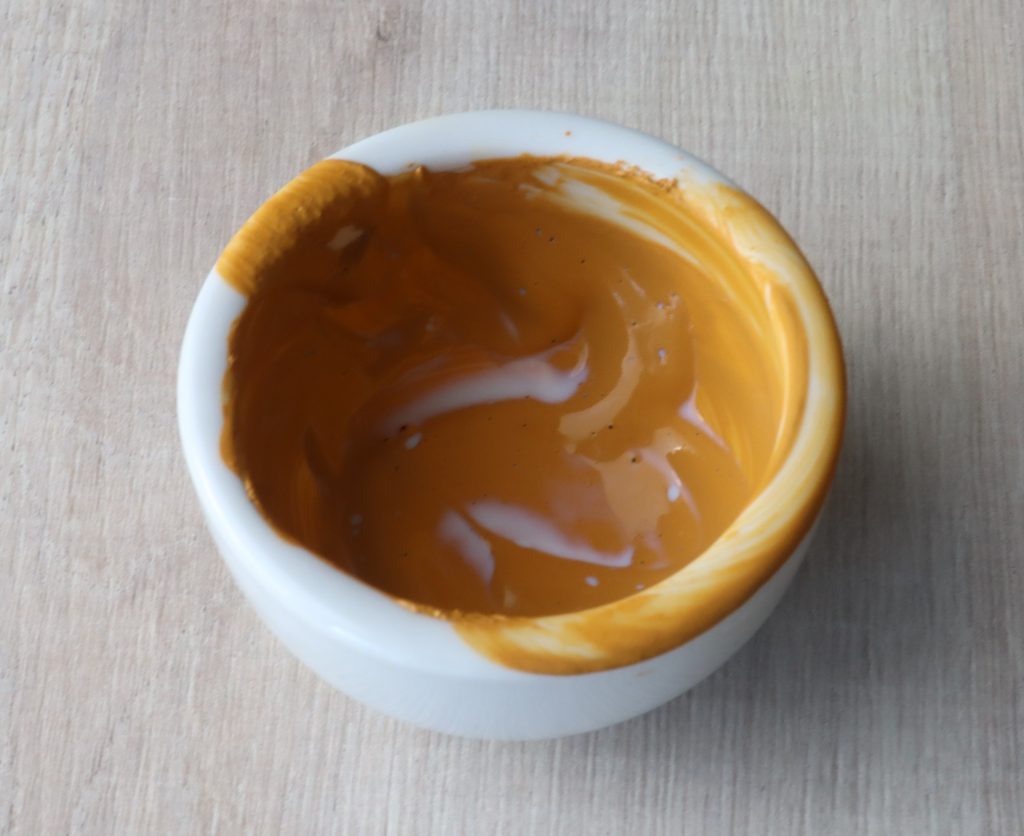
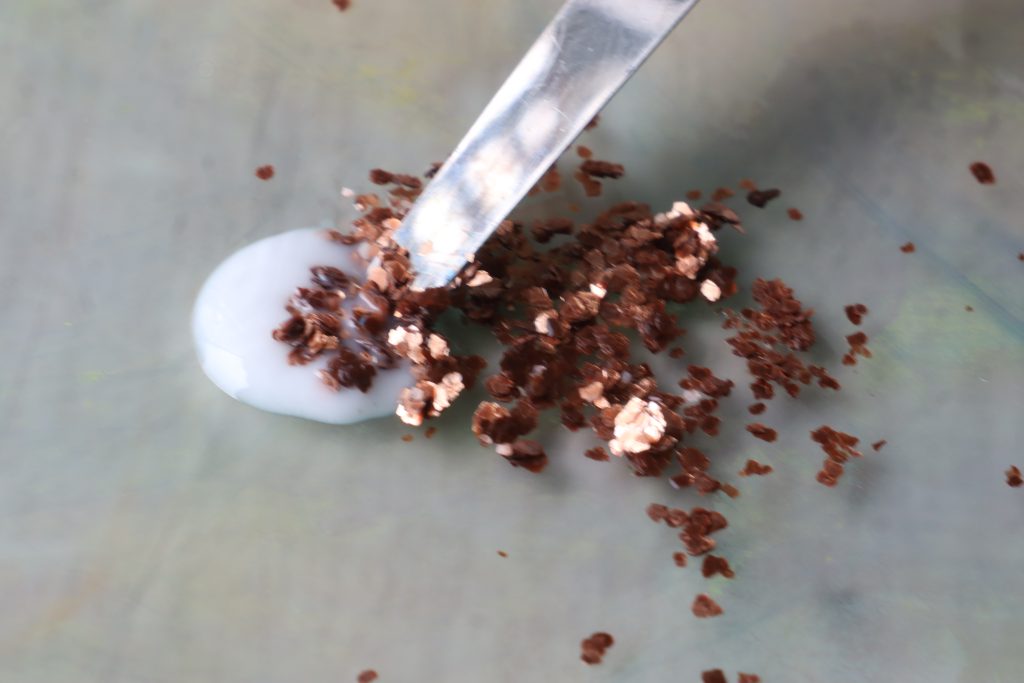
great article. I am interested in the Blackist of Blacks have you done any articles on that Black?
Thank you for your question. We have not written an article on the Blackest of Black paints, but if you do try the paint we would be happy to hear what you think about the color!
Ummmm…. this might be a dumb question but where do we get pigment powders?
Hello Anne.
There are many suppliers of dry pigment powders online. Both Dick Blick and Jerry’s Artarama sell them.
– Mike
I found this very informative.
Question- can you grind up pastel sticks and add Gum Arabic to make paint. I no longer do pastel painting but don’t want to sell all of my professional pastels. Would like to make paint from them.
Hello Cynthia, great question. Artists have been known to add watercolor binders (such as Gum Arabic) to ground pastels to use like watercolor or gouache. The results depend in part on what binders and fillers were used in the production of the pastels. With experimentation, this could be a good way to use your supply. As mentioned in the article, safety precautions should be taken when working with powdered pigments.
-Mike
This is a cool article about the ways Degas used pastels https://www.nga.gov/stories/articles/edgar-degass-experiments-pastel-and-watercolor
Thank you for sharing the link to the wonderful article!
I’ve been making (what your technician described several years ago in a communication with me) a “raw acrylic” using either dry pastels or pigment powders. I found by accident, that when I sketched my image onto gessoed canvas with pastel, it “melted” and mixed with whatever acrylic paint was on my brush-leading to some very fun colors. To take this a step further I started coloring in the big shapes on the canvas with dry pastel sticks. Then I dip my brush into Golden’s Airbrush Medium or High Flow Medium. Brushing into the pastel liquifies it making super interesting blends of color with often a high granular result that is much like watercolor paints on cold press or rough watercolor paper. 91% alcohol sprayed, dripped, or splashed further moved the pigments making some outstanding “happy accidents”. Sometimes I finish the painting with acrylic, but often the entire painting can be completed with only pastels and the above mentioned mediums. My painting “Eye See You” on my website is one I completed with pastel only.
I thoroughly enjoyed your article on mixing your own pigments. Thank you for sharing. It’s a very exciting prospect.
Loved your article on mixing your own acrylic paint. Thank you for sharing.
Thank you for sharing your article on mixing acrylic paint. It is an exciting prospect.
With Kremer closing in the US it’ll be hard to source a lot of dry pigments sadly, would be interesting if you could do something with dispersions since those are easier to get now.
Hello Mr. Pigments. Thank you for your comment. You can simply add dispersion to your gel medium of choice. Try to not exceed 25% dispersion, as they often contain high levels of retarders and grinding aids.
– Mike